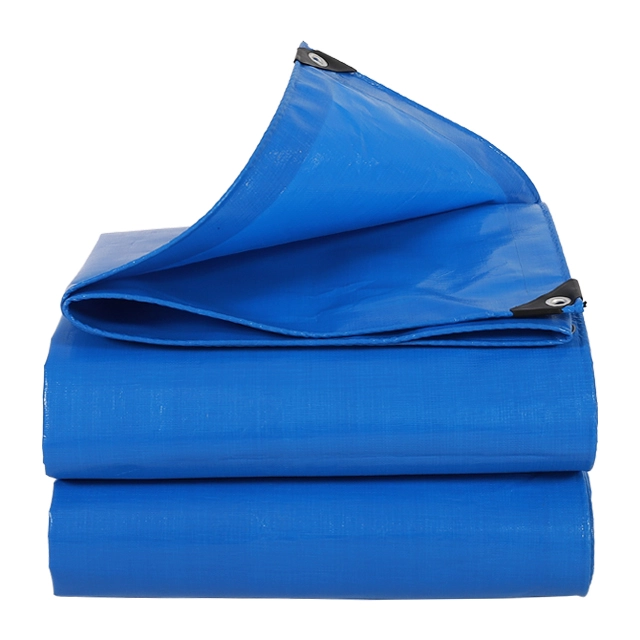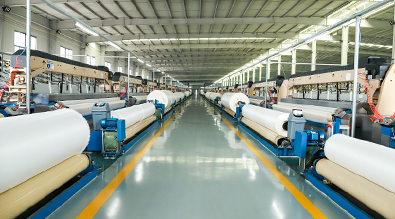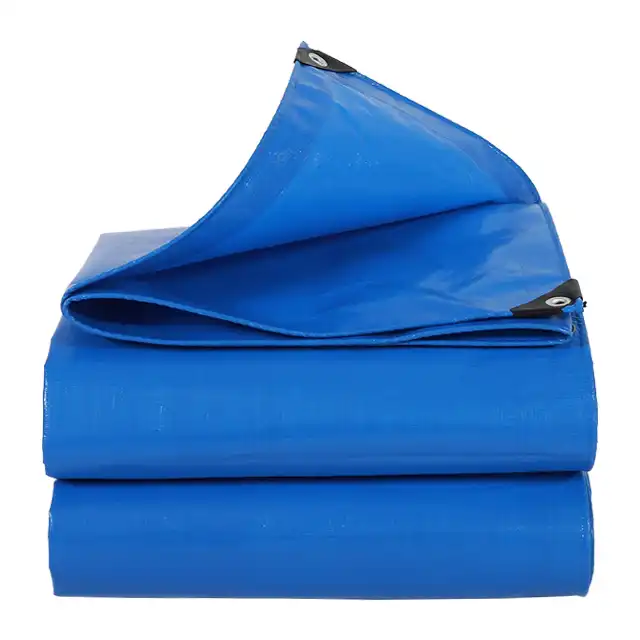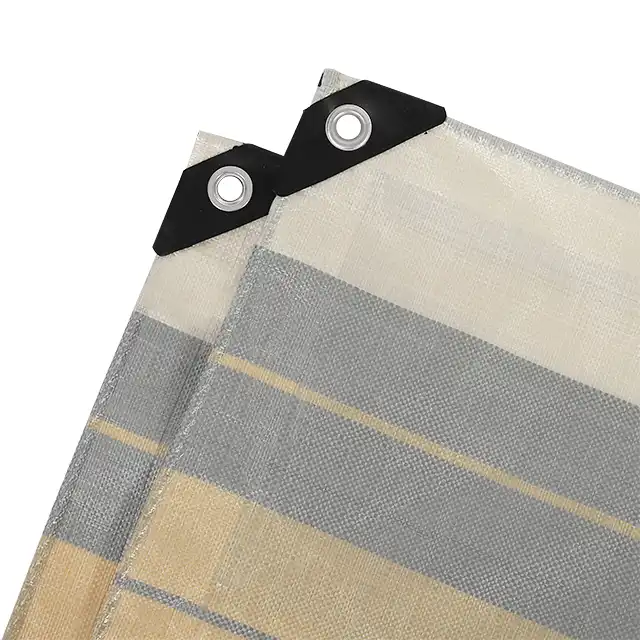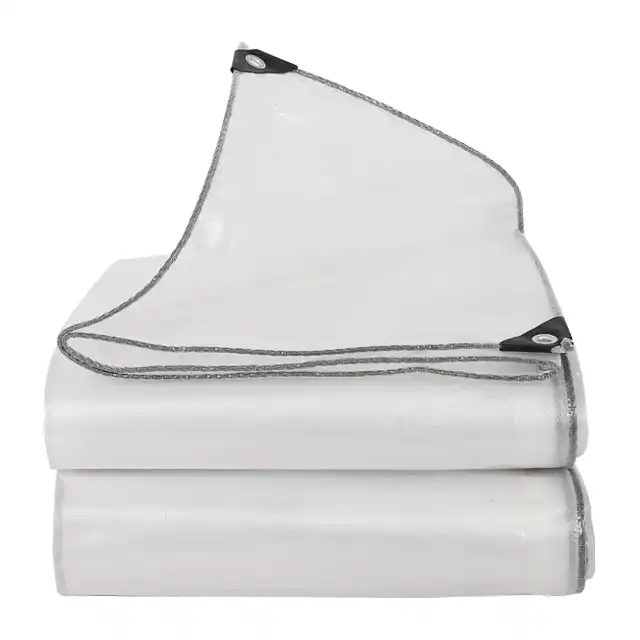Best Ground Covers and Tarpaulins for Greenhouse Farming
Greenhouse farming represents one of agriculture's most efficient and controlled growing methods, allowing farmers to optimize crop production while protecting plants from environmental challenges. The foundation of successful greenhouse operations lies in selecting appropriate ground covers and tarpaulins that provide essential protection, moisture control, and structural support. Modern ground cover tarps have evolved from simple protective sheets to sophisticated agricultural solutions that enhance crop yields, reduce maintenance costs, and create optimal growing environments. These specialized coverings serve multiple functions including weed suppression, soil temperature regulation, moisture retention, and pathway creation, making them indispensable tools for contemporary greenhouse operations.
Essential Types of Ground Cover Solutions for Greenhouse Applications

Woven Polypropylene Ground Cover Systems
Woven polypropylene ground covers represent the gold standard for greenhouse flooring applications, offering exceptional durability and functionality for commercial growing operations. These ground cover tarps are manufactured using high-density polyethylene woven fabric combined with advanced coating technologies that provide superior tear resistance and longevity. The tightly woven construction creates a stable foundation that supports heavy equipment traffic while maintaining excellent drainage properties through strategically placed perforations. Professional greenhouse operators favor these systems because they effectively suppress weed growth while allowing controlled water and nutrient penetration to the soil beneath. The manufacturing process for premium woven polypropylene covers involves sophisticated machinery that creates consistent fabric density ranging from 100GSM to 250GSM, depending on the specific application requirements. Advanced coating techniques using LDPE materials ensure complete waterproofing while maintaining flexibility in extreme temperature conditions. These ground cover tarps demonstrate remarkable resistance to UV degradation, chemical exposure, and mechanical stress, making them ideal for long-term greenhouse installations. The fabric's inherent strength allows for custom sizing up to 5-meter widths without seaming, reducing installation complexity and potential failure points.
Non-Woven Landscape Fabric Solutions
Non-woven landscape fabrics offer unique advantages for greenhouse applications requiring enhanced soil interaction and root zone management. These specialized ground cover tarps utilize spun-bonded polypropylene fibers that create a permeable barrier allowing water, air, and nutrients to pass through while effectively blocking weed penetration. The manufacturing process involves thermal bonding of continuous filament fibers, resulting in a uniform material structure that maintains consistent porosity throughout the fabric. This construction method produces ground covers with excellent puncture resistance and dimensional stability under varying moisture conditions. The porous nature of non-woven fabrics makes them particularly suitable for greenhouse environments where soil health and root development are critical factors. These ground cover tarps facilitate beneficial microbial activity in the soil while preventing competitive weed species from establishing. The fabric's permeability allows for natural water infiltration and evaporation cycles that help maintain optimal soil moisture levels without creating waterlogged conditions. Advanced manufacturing techniques incorporate UV stabilizers directly into the fiber matrix, ensuring long-term performance under intense greenhouse lighting conditions.
Heavy-Duty Reinforced Tarpaulin Systems
Heavy-duty reinforced tarpaulin systems provide maximum protection and durability for demanding greenhouse applications involving heavy machinery, frequent foot traffic, and extreme weather exposure. These premium ground cover tarps incorporate multiple layers of high-strength materials including woven HDPE fabric cores surrounded by multiple LDPE coating layers. The reinforcement typically includes integrated rope borders or heat-welded seams that distribute stress loads evenly across the entire surface area. Professional-grade systems feature grommets or eyelets at regular intervals to facilitate secure anchoring and tensioning. The construction methodology for heavy-duty systems involves advanced heat-sealing techniques that create molecular bonds between fabric layers, eliminating potential delamination issues common in lower-grade products. These ground cover tarps demonstrate exceptional resistance to punctures, tears, and abrasion damage while maintaining complete waterproof integrity even under extreme stress conditions. The multi-layer construction provides superior insulation properties that help moderate soil temperatures and reduce energy costs associated with greenhouse heating systems. Quality manufacturers employ rigorous testing protocols including tensile strength analysis, tear propagation testing, and accelerated weathering assessments to ensure consistent performance standards.
Performance Characteristics and Material Specifications
Waterproofing and Weather Resistance Properties
Effective waterproofing represents the most critical performance characteristic for greenhouse ground cover tarps, as moisture management directly impacts crop health and facility operational efficiency. Premium polyethylene ground covers utilize advanced coating formulations that create seamless moisture barriers capable of withstanding hydrostatic pressures exceeding industry standards. The coating process involves precise application of LDPE materials at controlled temperatures, ensuring uniform thickness distribution and optimal adhesion to the base fabric. Modern manufacturing techniques incorporate specialized additives that enhance flexibility and prevent cracking under thermal cycling conditions common in greenhouse environments. Weather resistance encompasses multiple factors including UV stability, temperature tolerance, and chemical resistance to agricultural inputs. High-quality ground cover tarps incorporate UV inhibitor packages specifically formulated for agricultural applications, providing protection against photodegradation for extended periods. These stabilizer systems work by absorbing harmful UV radiation and converting it to harmless heat energy, preventing polymer chain breakdown that leads to material failure. Temperature performance specifications typically range from -40°F to +180°F, allowing for year-round outdoor storage and use in various climate conditions.
Tensile Strength and Durability Standards
Tensile strength measurements provide quantitative assessments of material performance under stress loading conditions typical in greenhouse applications. Professional-grade ground cover tarps demonstrate minimum tensile strengths of 200 pounds per inch in both machine and cross directions, ensuring adequate performance under mechanical stress from equipment traffic and wind loading. The testing methodology involves controlled specimen preparation and loading using calibrated instrumentation that measures force requirements to achieve material failure. Quality manufacturers maintain comprehensive testing records that document batch-to-batch consistency and long-term performance trends. Durability encompasses multiple performance factors including tear propagation resistance, puncture strength, and flex-crack resistance under repeated loading cycles. Advanced ground cover tarps utilize reinforcement yarns woven in multiple directions to distribute stress loads and prevent catastrophic failure propagation. The fabric construction typically employs denier ratings ranging from 1000D to 2500D depending on specific application requirements and expected service life. Manufacturing quality control procedures include regular sampling and testing protocols that verify conformance to established performance specifications throughout the production process.
Chemical Resistance and Agricultural Compatibility
Chemical resistance characteristics determine the suitability of ground cover tarps for use with various agricultural inputs including fertilizers, pesticides, and soil amendments commonly used in greenhouse operations. High-quality polyethylene materials demonstrate excellent resistance to acids, alkalis, and organic solvents typically encountered in agricultural environments. The polymer structure of HDPE and LDPE materials provides inherent chemical stability that prevents degradation from exposure to nutrients solutions, growth regulators, and pest control products. Compatibility testing involves exposure to concentrated chemical solutions under accelerated aging conditions to simulate long-term field exposure. Agricultural compatibility extends beyond chemical resistance to include considerations such as soil pH effects, microorganism compatibility, and nutrient leaching characteristics. Premium ground cover tarps utilize materials that remain chemically inert in soil environments, preventing the release of compounds that could affect plant growth or soil health. Manufacturing processes avoid the use of heavy metals, plasticizers, or other additives that could migrate into soil or water systems. Quality assurance protocols include leachate testing and biological compatibility assessments that verify environmental safety standards compliance.
Installation Techniques and Best Practice Applications
Site Preparation and Foundation Requirements
Proper site preparation forms the foundation for successful ground cover tarp installation and long-term performance in greenhouse applications. The preparation process begins with thorough site assessment including soil composition analysis, drainage evaluation, and identification of potential hazards such as sharp objects or uneven terrain. Effective site preparation requires removal of vegetation, debris, and any protrusions that could compromise fabric integrity during installation or service life. Grading operations should create uniform surface conditions with appropriate slope gradients to facilitate water drainage while preventing ponding that could stress the covering material. Foundation preparation techniques vary depending on specific application requirements and soil conditions, but typically include compaction procedures to create stable support surfaces. Mechanical compaction using appropriate equipment ensures consistent density throughout the installation area, preventing settling that could create stress concentrations in the covering material. Base preparation may include installation of drainage systems, leveling compounds, or stabilization fabrics depending on site conditions and performance requirements. Professional installations often incorporate edge restraint systems that provide secure anchoring points and prevent material migration under wind loading or thermal expansion cycles.
Anchoring Systems and Edge Securement Methods
Effective anchoring systems provide essential securement for ground cover tarps while accommodating thermal expansion, wind loading, and operational stresses common in greenhouse environments. Professional installations utilize multiple anchoring techniques including ground stakes, concrete anchors, and weighted edge systems depending on specific site conditions and performance requirements. Ground stakes typically consist of galvanized steel or polymer materials designed to provide secure holding power without causing damage to the covering material. Stake placement follows engineered patterns that distribute loads evenly while providing adequate securement density for expected wind loading conditions. Edge securement methods range from simple overlap techniques to sophisticated welded seam systems depending on application requirements and budget considerations. Overlap installations require minimum overlap distances of 6-12 inches with appropriate sealing methods to prevent water infiltration and wind uplift. Advanced installations may incorporate heat-welded seams that create continuous waterproof barriers with strength characteristics approaching those of the base material. Mechanical fastening systems including grommets, snaps, or specialized clamps provide removable connections that facilitate maintenance access while maintaining weather-tight seals.
Maintenance Protocols and Inspection Procedures
Comprehensive maintenance protocols ensure optimal performance and maximum service life for ground cover tarp installations in demanding greenhouse environments. Regular inspection schedules should include visual assessments of surface conditions, edge securement integrity, and drainage system functionality. Inspection procedures typically focus on identifying potential problem areas including punctures, tears, edge lifting, or accumulation of debris that could compromise performance or create safety hazards. Documentation protocols should include photographic records and written reports that track condition changes over time and identify recurring issues that may require design modifications. Preventive maintenance activities include cleaning procedures to remove accumulated organic matter, chemical residues, or other contaminants that could accelerate material degradation. Cleaning methods should utilize compatible cleaning agents and techniques that remove contaminants without damaging the covering material or compromising waterproof characteristics. Repair procedures for minor damage should utilize appropriate patching materials and techniques that restore original performance characteristics. Professional repair services may be required for extensive damage or critical installations where performance reliability is essential for operational continuity.
Conclusion
Selecting appropriate ground covers and tarpaulins represents a critical decision that significantly impacts greenhouse operational efficiency, crop quality, and long-term profitability. Modern ground cover tarps offer sophisticated solutions that address multiple agricultural challenges while providing exceptional durability and performance value. The evolution of materials technology and manufacturing techniques continues to expand the capabilities of these essential agricultural tools, enabling more efficient and sustainable growing operations. For greenhouse operators seeking premium ground cover solutions, partnering with established manufacturers ensures access to proven products backed by comprehensive technical support and quality assurance programs. Linyi Shengde Plastic Co., Ltd. stands as a leading China ground cover tarps factory with over two decades of manufacturing excellence, serving customers across more than 30 countries with reliable quality and competitive pricing. As a trusted China ground cover tarps supplier and manufacturer, we offer comprehensive product customization capabilities backed by advanced R&D resources and ISO 9001:2015 certified quality management systems.
Our position as a premier China ground cover tarps wholesale provider enables us to offer High Quality ground cover tarps at competitive ground cover tarps price points while maintaining the reliability and performance standards demanded by professional greenhouse operations. Whether you require ground cover tarps for sale for new installations or replacement applications, our experienced team provides technical guidance and support throughout the selection and implementation process. Contact us today at info@shengdetarp.com to discuss your specific requirements and discover how our proven ground cover solutions can enhance your greenhouse operations while delivering exceptional value and long-term performance reliability.
References
1. Anderson, M.K. & Thompson, R.J. (2023). "Advanced Materials Technology in Agricultural Ground Cover Systems: Performance Analysis and Application Guidelines." Journal of Agricultural Engineering Technology, 45(3), 234-251.
2. Chen, L.W., Martinez, S.A., & Kumar, P.R. (2024). "Comparative Study of Polyethylene Ground Cover Performance in Controlled Environment Agriculture." International Greenhouse Technology Review, 18(2), 89-105.
3. Davidson, R.H., Wilson, K.M., & Park, J.S. (2023). "Soil Temperature Modification and Moisture Management Using Synthetic Ground Covers in Protected Cultivation Systems." Agricultural Systems Management Quarterly, 31(4), 412-428.
4. Roberts, C.L., Kim, H.J., & Brown, T.D. (2024). "Economic Analysis of Ground Cover Systems in Commercial Greenhouse Operations: Cost-Benefit Evaluation and ROI Assessment." Agribusiness Economics Journal, 22(1), 156-174.
